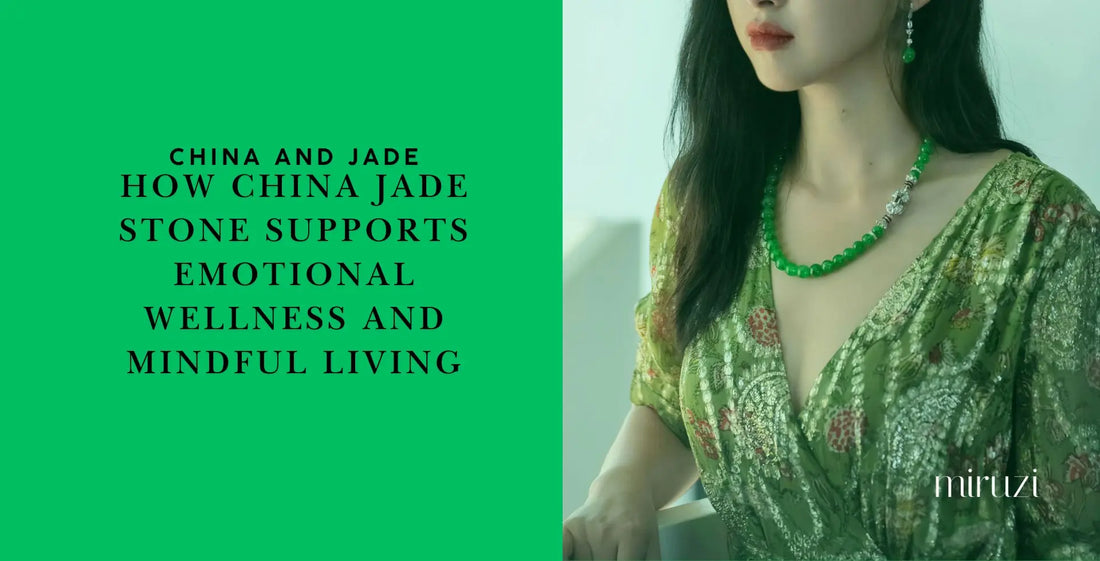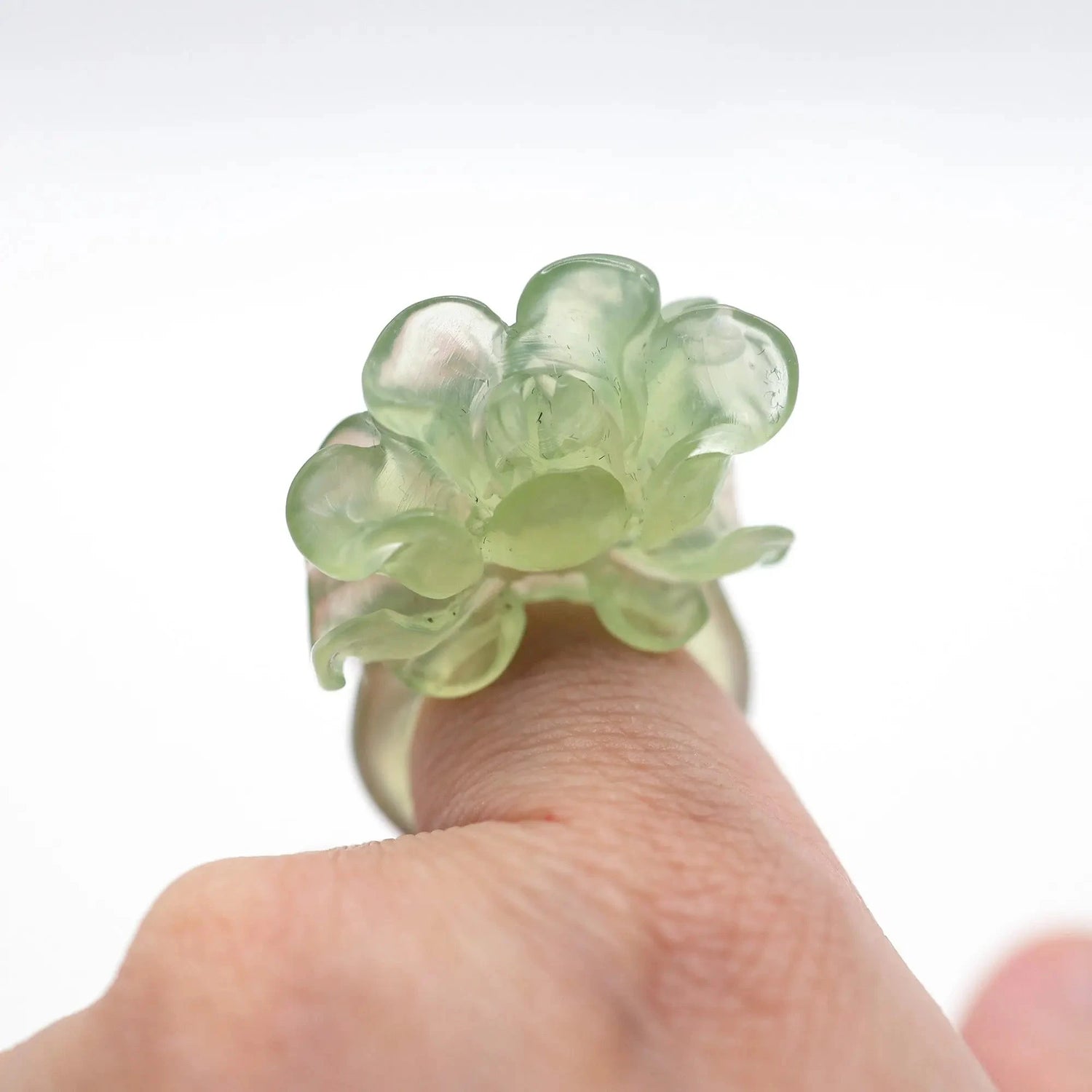
China Jade Stone vs. Burmese Jade: What’s the Difference?
Share
Jade is one of the most revered gemstones in the world—especially across East Asia, where it symbolizes purity, protection, and spiritual harmony. But not all jade is the same. Two of the most widely recognized types are China jade stone and Burmese jade. While they may appear similar at a glance, they are fundamentally different in mineral composition, cultural heritage, and even emotional symbolism.
So what’s the real difference between them—and how do you choose the one that resonates with you?
What Is China Jade Stone?
“China jade stone” typically refers to nephrite, the original form of jade used in Chinese culture for over 5,000 years. Found in regions such as Hetian (Hotan) in Xinjiang and across parts of Mongolia, nephrite jade is known for its soft, creamy luster and calming energy. It is slightly less translucent than its Burmese counterpart but carries deep cultural weight—woven into Chinese poetry, philosophy, and ritual.

👉 Explore our Artistic Fine Jewelry – Eternal Dragon Dance Jade Bangle in Purple & Gold
At MIRUZI, many of our bangles and rings are carved from Mongolian nephrite and jade, honoring this ancient tradition with minimalist and symbolic designs.
Characteristics of China Jade (Nephrite):
- Composition: Calcium magnesium silicate
- Hardness: Softer than jadeite (Mohs 6–6.5)
- Texture: Smooth, waxy luster with a gentle glow
- Color Range: Creamy white, olive green, yellow, gray
- Symbolism: Confucian virtues, harmony, protection
- Cultural Use: Burial suits, talismans, wedding gifts, heirlooms
What Is Burmese Jade?
Burmese jade refers to jadeite, a rarer and more vibrant form of jade mined primarily in Myanmar (Burma). Introduced to China during the Qing Dynasty, jadeite quickly became prized for its intense color and glassy translucence—especially the iconic imperial green variety.

👉 Explore our Jade Earrings | Jadeite Emerald Enchantment
Jadeite is considered more valuable in today's global market due to its rarity and gem-like qualities, though it holds a shorter historical footprint in Chinese culture compared to nephrite.
Characteristics of Burmese Jade (Jadeite):
- Composition: Sodium aluminum silicate
- Hardness: Higher than nephrite (Mohs 6.5–7)
- Texture: Glassy, brilliant translucence
- Color Range: Bright green, lavender, white, black, red
- Symbolism: Wealth, vitality, prestige
- Cultural Use: High-end jewelry, investment pieces
Cultural Significance: Rooted vs. Regal
- China jade (nephrite) is seen as a spiritual and moral stone, embedded in everyday life, rituals, and values. It symbolizes quiet strength, compassion, and balance.
- Burmese jade (jadeite) is often associated with prestige and status, admired for its rarity, clarity, and vibrant color.
Both have their place in Chinese and global cultures, but their roles and meanings differ greatly.
How to Choose: Emotional Energy or Aesthetic Sparkle?
Choosing between China jade and Burmese jade often comes down to what you value:
- Looking for a piece that connects with emotional wellness, daily intention, and cultural depth?
➤ China jade stone may be for you. - Seeking a vibrant, statement-making gem for special occasions or investment?
➤ Burmese jade (jadeite) offers brilliance and rarity.
MIRUZI's Philosophy: Honoring Jade's Healing Spirit
At MIRUZI, we work primarily with China jade stone—especially nephrite and quartzite—because we believe in jade not just as a gem, but as a guide. Our collections focus on emotional clarity, heritage, and nature-inspired artistry.
✨ Explore: Minimalist Jade Jewelry Collection
For those who seek meaning in simplicity, each piece is hand-carved to honor tradition and support mindful living.

✨ Discover: Unique Rings from Natural Stones – One-of-a-Kind Jade Beauty
A soft, symbolic piece that connects love, growth, and gentle strength—rooted in ancient beliefs.

FAQ: Common Questions About Jade Types
Q: Is one more “real” than the other?
A: Both nephrite and jadeite are scientifically classified as real jade. They are simply different minerals with distinct characteristics.
Q: Why is Burmese jade often more expensive?
A: Jadeite is rarer and often more gem-like in clarity and color, driving higher market value.
Q: Is China jade less valuable?
A: Not at all. While it’s more abundant, its cultural, emotional, and historical value is immense—especially in handmade and heirloom-quality pieces.
Conclusion: Two Stones, One Spirit
Whether you’re drawn to the soft, soulful glow of China jade stone, or the vibrant brilliance of Burmese jade, both carry centuries of meaning. At MIRUZI, we invite you to explore jade not just as adornment, but as a partner in your own journey—toward peace, purpose, and inner beauty.

